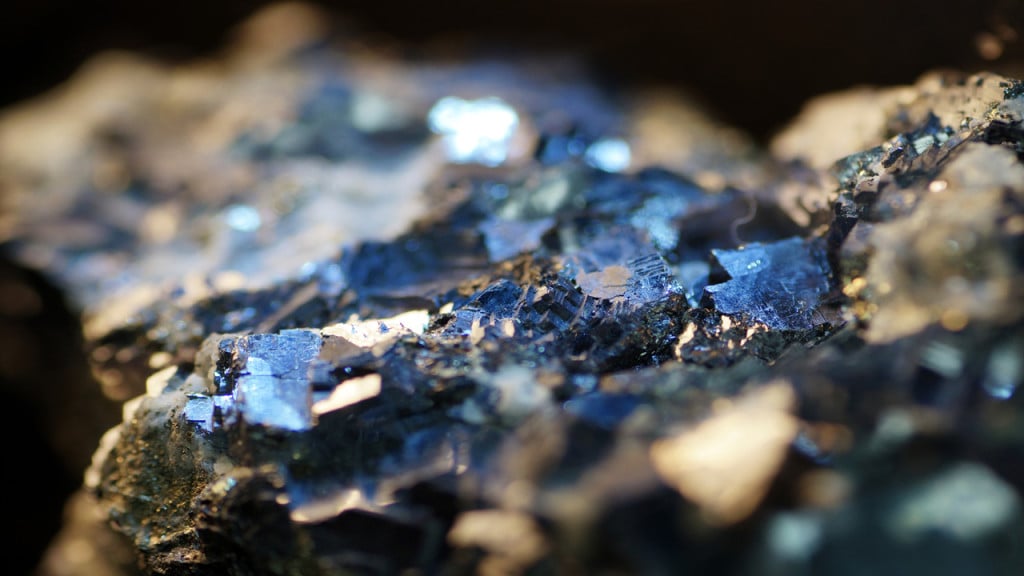A Stronger America Through Strategic Rare Mineral Initiatives

President Trump's Strategic Pursuit of Rare Earth Minerals: Securing America's Technological Future
As President of the United States, I have embarked on a comprehensive strategy to ensure that America leads in the acquisition and processing of critical minerals essential for emerging technologies. This initiative is driven by the imperative to reduce dependence on adversarial nations, particularly China, and to position the U.S. as a dominant force in the global technological landscape.
The Imperative for Rare Earth Minerals
Rare earth elements (REEs) and critical minerals are the backbone of modern technology. From semiconductors and electric vehicles to advanced defense systems, these materials are indispensable. Recognizing this, my administration has prioritized the establishment of secure, domestic supply chains to meet the growing demands of the 21st century.
Competing with China: A Strategic Necessity
China currently controls a significant portion of the global supply of REEs, posing potential risks to global supply chains. In response, I have initiated several bilateral agreements and investments aimed at diversifying sources and reducing reliance on Chinese-controlled resources.
Domestic Initiatives
Within the United States, we are focusing on expanding domestic production capabilities. The Mountain Pass mine in California, operated by MP Materials, is a cornerstone of this effort. The Pentagon has become the largest shareholder in MP Materials, investing $400 million and committing to purchase all output from a new magnet factory. This partnership aims to bolster domestic production and processing of REEs, ensuring a steady supply for both civilian and defense applications.
International Partnerships
To further secure the supply of critical minerals, my administration has forged strategic partnerships with key allies and resource-rich nations:
Australia: In October 2025, I signed an $8.5 billion critical minerals agreement with Australian Prime Minister Anthony Albanese. This deal includes $3 billion in joint investments over six months, targeting deposits of critical minerals worth $53 billion. The agreement also involves the U.S. Export-Import Bank issuing Letters of Interest totaling over $2.2 billion to support projects by companies like Arafura Rare Earths, Northern Minerals, and Graphinex. Additionally, we are supporting U.S. aluminum giant Alcoa in developing a gallium plant in Western Australia, expected to supply up to 10% of global gallium needs.
Ukraine: In April 2025, I signed a framework agreement with Ukraine to establish a joint investment fund for the reconstruction of Ukraine, capitalized in part by revenues from future natural resource extraction. This agreement aims to strengthen economic cooperation and attract investments for Ukraine's recovery, while securing access to critical minerals.
Democratic Republic of Congo (DRC): Recognizing the DRC's vast reserves of cobalt, copper, and other rare earth elements, my administration is facilitating a peace agreement between the DRC and Rwanda. This agreement is expected to grant the U.S. access to significant mineral rights in the DRC, enhancing our supply of essential materials for technology manufacturing.
Investment in Africa
Beyond individual agreements, my administration is exploring broader strategies to enhance mineral supply chains in Africa. We are considering the establishment of regional processing hubs, which would create jobs and better secure supply chains. This approach aligns with African aspirations outlined in the African Green Minerals Strategy while meeting U.S. strategic needs.
Executive Order on Deep-Sea Mining (April 23, 2025)
In an effort to secure alternative sources of critical minerals, Trump signed an executive order to expedite permits for deep-sea mining in U.S. and international waters. The initiative aimed to access seabed resources rich in metals like nickel and cobalt, essential for battery production. This move faced criticism from environmental groups and legal experts concerned about potential ecological impacts and violations of international law.
The Verge
Investment in Domestic Mining Projects (October 2025)
The administration allocated approximately $35.6 million to develop critical mineral resources in Alaska's Ambler mining district. This investment aimed to enhance domestic production of copper, zinc, and lead, further reducing reliance on foreign sources.
Reuters
Critical Minerals Agreement with Australia (October 20, 2025)
Trump and Australian Prime Minister Anthony Albanese signed an $8.5 billion agreement to strengthen supply chains and counter China's growing restrictions on rare-earth exports. The deal included plans for joint investments in the critical minerals sector, focusing on securing stable prices and supply.
The pursuit of rare earth minerals is not merely an economic endeavor but a strategic imperative. By securing access to these vital resources, we are ensuring that America remains at the forefront of technological innovation and global competitiveness. Through domestic initiatives and international partnerships, my administration is committed to building a resilient and secure supply chain for critical minerals, safeguarding our nation's future in an increasingly complex global landscape.
We finally have a strong, intelligent, and forward-thinking president who looks to the best of the future and is clearly working to make America a leader in innovation, security, and opportunity. By prioritizing critical resources, fostering strategic partnerships, and investing in domestic capabilities, he is ensuring that our nation is prepared to meet the challenges of tomorrow while creating a foundation for sustained economic growth, technological advancement, and global influence. This approach demonstrates a commitment not just to the present, but to a resilient and prosperous America for generations to come.I’ve watched, with growing optimism, as President Trump has moved swiftly to shore up America’s access to the rare and critical minerals that will power our economy, our industries, and our armed forces for decades to come. This isn’t small-time diplomacy or empty talk; it’s a full-throated strategy to end U.S. dependence on unstable or unfriendly supply chains and to put American workers, manufacturers, and innovators back in the driver’s seat of the technology revolution.
The administration has turned trade summits and White House meetings into concrete supply-chain wins. In late October 2025, the United States announced an agreement with Malaysia that explicitly removes the threat of export quotas or bans on critical minerals and rare earth elements to American companies, a practical assurance that manufacturers in the U.S. will have a reliable partner in Southeast Asia for important inputs. This is the kind of predictable access firms need when planning new factories, new battery lines, and new defense production.
The administration has not limited itself to government-to-government agreements. It has used American financing tools to underwrite private projects that directly increase U.S. supply options. A striking example: the U.S. Export-Import Bank issued a letter of interest in mid-2025 for a loan of up to $120 million to support the Tanbreez rare-earths project in Greenland, a move that signals Washington’s willingness to back physical production abroad when it advances U.S. supply security. The same project has committed production to U.S. customers through offtake arrangements, meaning American manufacturers can count on tangible volumes of concentrate in the near term. That pragmatism, combining public finance and private sector expertise, is exactly how you turn strategic intent into delivered supply.
Beyond the headline agreements, the administration’s approach contains three practical pillars that together form a durable, long-term strategy. First: diversify supply. By building relationships with multiple nations (Australia, Malaysia, Greenland partners, Ukraine, and others), the U.S. reduces single-point dependence and strengthens negotiating leverage. Second: invest in processing and manufacturing. Deals aren’t just about mines; they are about building refineries, separation plants, and value-added facilities so that raw minerals are turned into American-made components for EVs, wind turbines, and defense systems. Third: move fast on financing and permitting. Whether it’s concentrated public-private financing packages, the use of EXIM and other tools, or expedited regulatory reviews, speed matters when global competitors are racing to lock up resources.
For the U.S. workforce, these moves translate into real jobs and real factories. New mines and downstream processing create employment across mining towns, manufacturing hubs, and transport corridors. But perhaps more importantly, they re-establish secure domestic and allied supply chains for the semiconductors, batteries, electric motors, and guidance systems that define 21st-century industry. That’s economic patriotism: making sure the chips and magnets that power our devices and defense systems come from friendly, reliable partners.
The administration has also been smart about linking mineral access to wider strategic goals: economic partnerships that open markets for U.S. goods, reconstruction funds that stabilize partner nations, and finance lines that encourage Western processing capacity rather than raw exports to adversaries. Those linkages mean minerals policy is not an isolated technical field but a lever of broader national strategy — and President Trump has used his negotiating position to pull that lever decisively.
Looking ahead, the path is clear and action-oriented: accelerate investment in allied source countries, underwrite priority processing capacity in friendly jurisdictions, and pair commercial offtake deals with government support to de-risk projects. The Trump administration has already begun executing on this blueprint — from letters of interest at EXIM for Greenland projects, to rapid investment pledges with Australia, to binding commitments from trade partners in Southeast Asia. Each deal both shores up supply and creates the business certainty U.S. companies need to expand plants and hire.
I believe this is the kind of big, strategic thinking America needed. Instead of waiting for shortages to bite or letting other powers dominate the supply chain for decades, the administration is proactively building alternatives, and doing so at the scale and speed required by modern industry. For readers who want a stronger America in manufacturing, defense, and clean energy technology, these mineral deals are a central piece of the comeback story. They are practical, patriotic, and forward-looking, and they will help ensure that American innovation has the raw materials it needs to thrive.
Related Discussions
- 39
Do On To Others Not Us --- We Just Care About A Green Planet Not Kids
by Sharlee 2 years ago
Look here not there...Biden turns to country with documented child labor issues for green energy mineral supplies: 'It's egregious'The Biden administration opened the door to financing mining projects in the Democratic Republic of the Congo (DRC) and Zambia to bolster the global green energy supply...
- 19
Joe" Providing Jobs - But To Other Countries
by Sharlee 4 years ago
Once again, the hypocrisy demonstrated by President Biden and Democrats that support cuts to our nation’s mineral supply is disturbing. And with the swipe of a pen, he has done just that. Someone needs to hold this administration accountable for these types of destructive policies....
- 58
National Strategic Stockpile description has suddenly changed. Why?
by NayNay2124 5 years ago
The description of the National Strategic Stockpile originally was described as "the nation's largest supply of life-saving pharmaceuticals and medical supplies for use in a public health emergency severe enough to cause local supplies to run out."The description of the national Strategic...
- 112
True or false: America has improved under Biden/Harris.
by Kathryn L Hill 10 months ago
What are the the improvements we want to see going forward. Of course, Kamala says she is her own person and will implement her own agenda.What will that agenda be? She has stated she wants to bring down grocery prices and help new home owners pay for their down payments, but government has pretty...
- 15
President Donald Trump Keeps Winning for the United States
by Readmikenow 5 months ago
President Trump secured the border in unprecedented fashion.Illegal border crossings have declined to the lowest level ever recorded — down 94% from last February and down 96% from the all-time high of the Biden Administration. In one sector, illegal border crossings are down 99% over 2023.Fox News...
- 17
Pete Buttigieg has been on paternity leave amid supply-chain crisis
by Readmikenow 4 years ago
I read this, and then I read it again, and then I laughed. My how things have changed from when my wife and I had our children. I saw what happened to my wife for 9 months and then what occurred when she gave birth. I was in the room. I believe she needed paternity leave to...






